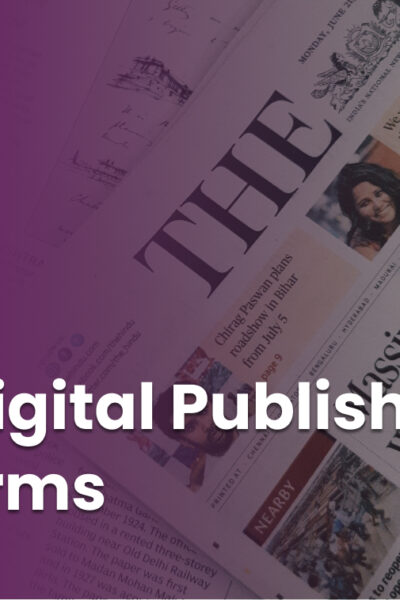Bots (short for robots) are software applications that run automated, simple and repetitive tasks over the Internet. It is believed that over 40% of all Internet traffic consists of bot traffic nowadays. In most cases, they are responsible for web crawling, in which an automated script fetches, analyzes, and files information from web servers.
They are present also in the publishing business and their meaning is increasing.
Bots that copy real users’ behavior are constantly filtering through the traffic on publishing websites around the world. As they increasingly improve and adapt to look like a real human visitor, investments in automated bot detection and management can be helpful for publishers.
What can bots do?
Of course, there are different kinds of bots, let’s call them “good” and “bad”. The first ones automate tasks for the benefit of users while the second, by contrast, create havoc by automating spam campaigns, denial of service attacks, or break network security.
In the case of the publishing industry, removing bad bots is important, because they artificially boost traffic numbers, causing users’ behavior analytics to be distorted.
Eliminating bad bots that grow fake traffic is a critical step in giving publishers the accurate data they need to improve the real user experience, drive real users’ growth and get more financial benefits from the advertising.
Talking about bots’ functioning in the publishing industry it is worth mentioning about the predictions that bots would replace content creators in the future. No worries, I don’t mean that bots will replace journalists and copywriters in writing engaging and original pieces of content. However, there are kinds of content that are prepared by the following formula and can be automated. These are for example reports, a compilation of statistics, etc. There have already been attempts to write books by bots, but it still requires some refinement. But as of today, bots are widely used in the publishing industry in the form of chatbots. This is what we will look at in the following part of this article.
Chatbots in the publishing industry
One of the variants of using bots in practice are the so-called chatbots. They are internet-based computer programs that simulate conversations with people, whether on a website, or social media, or even WhatsApp or Facebook Messenger. Chatbots allow website visitors to immediately converse and find answers to questions, solving problems immediately. You probably know them from many websites, where they function as a support, help in customer service (for example, you can easily order a meal thanks to them from many restaurants).
According to a 2018 survey, 62% of internet users said that they enjoy using chatbots for customer support. That’s more than half of the network’s users! This statistic shows many brands and publishers that chatbots have potential, the more so, the spectrum of their usage is wider than the reader support.
Chatbots open a lot of new opportunities for publishers solving problems their customers struggle with. What’s more, this technology does it in an effective and timely way, without the necessity of registration or sign-in.
How can publishers use chatbots?
In many aspects, chatbots play the same roles as mobile apps for magazines. They both can help publishers in a modern and effective way gain new customers, and strengthen ties with the present ones. However, their designation differs slightly from each other.
What can chatbots be used for in a publishing company?
- To manage subscriptions
The number of publishers offering subscriptions is on the rise, and chatbots are one of the tools that can make readers managing it easier. They can be engaged in basic service tasks, like canceling subscriptions or something more advanced like helping with subscription time control. Subscribers can just ask them how long until their subscriptions renew or what the rate for a subscription they are interested in is currently.
- To provide a customized digest
Chatbots can ensure readers customized digests to get information on specific chosen topics like politics, business, science, etc. Readers could get their digest as often as they want: once a week, once a day, or receive all the breaking news immediately.
- To make readers still up to date
They help with providing readers the latest news in the spheres they are interested in what keeps the engagement up. Delivery of relevant and updated content can lead to the growth of subscriptions.
- To suggest novelties
Bots have the ability to learn what is a powerful function. Based on users’ behavior – the stories they read, the amount of time spent with each story, and the sum of all of their interactions including likes and shares – bots can recommend content to people. It can be stories they’re looking for, similar to the way a librarian might help people find books at the library and that is likely to be of interest to readers before they begin looking for that content. It also works the other way. They can detect the lack of interest in the content and eliminate undesirable information.
- To improve collecting data
Chatbots can be helpful as tools to collect readers’ data such as the user’s name and email, monitor reader engagement and collect information about them and topics they subscribe or are interested in learning more about. All of these can be very useful for profiling users, for retargeting, and for creating tailored conversation flows for specific types of users.
- To improve e-mail marketing
Chatbots can help signing readers up for email newsletters. The chatbot will provide you with individual information about your leads, while you can prepare more customized content and personalized offers for your email promotions, thus improving user engagement.
Content from our partners
Chatbots in publishing – real examples
Chatbots are used both in newspapers and books publishing. I choose three examples of well known brands to show you how they use this technology.
- Harper Collins added book recommendation bots to Facebook. It resolves problems many readers face – what will I read next? The Epic Reads chatbot helps with answering this question. With a few simple questions about past favorites and genre preferences, this bot can find a book that matches your unique literary tastes.
- A similar idea is used via Macmillan Publishing. Their chatbot is a book recommendation assistant which searches for an answer frequently asked by customers on what book to get as a gift or just read. Chatbot talks to them like a human and helps them choose and order books online via a conversational interface.
- Chatbots are also used by newspaper publishers like The Wall Street Journal. They created a Messenger chatbot that gives people access to the Journal’s daily information digests, breaking news and live markets data. The goal was to engage a younger audience and introduce its world class journalism to new readers around the world.
The necessity to follow technological innovations
Chatbots won’t replace your private communications with readers, your homepage content, emails that readers opt-in to receive, or even social media communicators. There are a lot of reasons why publishers should have all of those channels and take care of them. However, chatbot technology is unique and has the ability to help publishers engage with their readers in a different, new way.
They aren’t just an information delivery tool. Chatbots are, essentially, a conversational tool using knowledge about customer’s needs and insights. The art is to answer them in the proper time, as well as it’s possible. It leads to creating a more engaging experience that makes people more likely to click through when you want them to.
Chatbots are a trend that will be developed in the future along with delivering an even more personalized reading experience.












